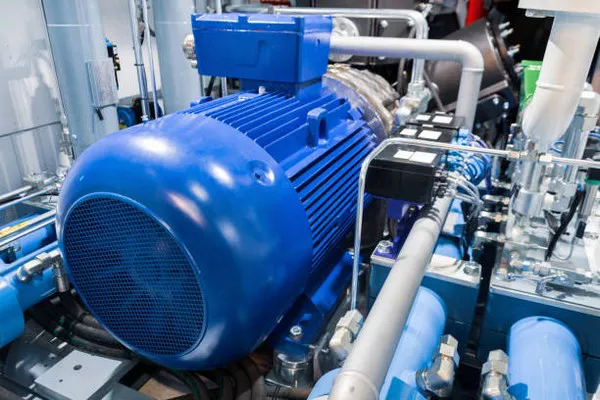In the realm of engineering and industrial applications, compressors play a pivotal role in various processes, offering a wide range of functionalities across different industries. A compressor is a mechanical device designed to increase the pressure of a gas by reducing its volume. This article aims to provide a comprehensive overview of compressors, exploring their types, working principles, applications, and the crucial role they play in diverse sectors.
Types of Compressors
Compressors come in various types, each tailored to specific applications based on factors such as pressure requirements, volume flow, and the nature of the gas being compressed. The primary types of compressors include positive displacement compressors and dynamic compressors.
Positive Displacement Compressors
Positive displacement compressors operate by trapping a volume of gas and then reducing its volume to increase its pressure. This category further divides into reciprocating compressors and rotary compressors.
a. Reciprocating Compressors
Reciprocating compressors use a piston-cylinder mechanism to compress gas. The piston moves back and forth inside a cylinder, drawing in gas during the suction stroke and compressing it during the compression stroke. These compressors are suitable for high-pressure applications and are commonly found in industries such as petrochemical, manufacturing, and natural gas processing.
b. Rotary Compressors
Rotary compressors, on the other hand, utilize rotating elements to compress gas. Examples of rotary compressors include screw compressors and vane compressors. Screw compressors feature two intermeshing rotors, while vane compressors use vanes mounted on a rotor to compress the gas. Rotary compressors are often more compact and have smoother operation compared to reciprocating compressors.
Dynamic Compressors
Dynamic compressors impart kinetic energy to the gas stream, converting it into potential energy by slowing it down and increasing its pressure. The two main types of dynamic compressors are centrifugal compressors and axial compressors.
a. Centrifugal Compressors
Centrifugal compressors employ a rotating impeller to accelerate gas radially outward. The kinetic energy is then converted into pressure as the gas slows down in the diffuser. These compressors are suitable for high-flow, low-pressure applications and find use in air conditioning systems, gas turbines, and certain industrial processes.
b. Axial Compressors
Axial compressors use a series of rotating and stationary blades to compress gas in an axial direction. They are commonly found in aircraft engines, power plants, and gas turbine applications. Axial compressors are known for their high efficiency in handling large volumes of gas.
Working Principles of Compressors
Understanding the working principles of compressors is essential for grasping their functionality. In positive displacement compressors, gas is trapped in a confined space and compressed by reducing the volume of that space. Reciprocating compressors achieve this through the back-and-forth motion of a piston, while rotary compressors use rotating elements.
Dynamic compressors, on the other hand, rely on the kinetic energy of the gas. In centrifugal compressors, the impeller imparts kinetic energy to the gas, while in axial compressors, the gas is accelerated in an axial direction by a series of blades.
See Also: Is Replacing the Compressor in Your Car’s AC Unit Worth It?
Applications of Compressors
Compressors play a vital role in numerous industries and applications, contributing to the efficient functioning of various processes. Some key applications include:
Industrial Manufacturing: Compressors are integral to manufacturing processes such as pneumatic tools, material handling, and pressurized air systems.
Oil and Gas Industry: In the extraction, processing, and transportation of oil and gas, compressors are used for gas compression, gas lift systems, and gas transmission pipelines.
Refrigeration and Air Conditioning: Compressors are essential components in refrigeration and air conditioning systems, where they compress and circulate refrigerants to maintain desired temperatures.
Power Generation: Gas turbine power plants and steam power plants utilize compressors for air compression, a critical step in power generation processes.
Aerospace: Compressors are employed in aircraft engines to compress air before combustion, enhancing engine efficiency and performance.
Chemical and Petrochemical Industry: Compressors play a crucial role in processes such as ethylene production, hydrogen compression, and various chemical manufacturing processes.
Healthcare: In medical applications, compressors are used in devices like ventilators and oxygen concentrators to ensure a reliable supply of compressed air or oxygen.
Conclusion
Compressors, with their diverse types and applications, serve as indispensable components across a wide range of industries. Understanding the principles governing their operation is crucial for engineers, technicians, and professionals working in fields where compressors are employed. As technology continues to advance, the efficiency and reliability of compressors are expected to improve, further contributing to the progress of industries worldwide. In conclusion, a thorough comprehension of compressors is paramount for anyone involved in the design, operation, or maintenance of systems where these devices are utilized.

